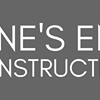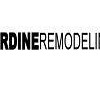Different types of businesses have different types of pest challenges, and Liberty has the experience to provide the appropriate prevention and treatment services. At Liberty Termite and Pest Control Inc., we service schools, offices, warehouses, apartments, commercial kitchens and hotels in addition to residential properties. Whether you need an emergency response, information and advice or an ongoing pest management program, we have the experience to safely and discreetly handle your pest problems.
Carpenter ants are among the largest ants, from 1/4- to 3/8-inch long. The most common species is black, but some have reddish or yellowish coloration. Workers have large mandibles. They live both outdoors and indoors in moist, decaying or hollow wood. They cut "galleries" into the wood grain to provide passageways for movement from section to section of the nest and may leave behind sawdust that provides clues to their nesting location. Carpenter ants do not eat wood, but will feed on nearly anything people eat-particularly sweets and meats.
The old childhood rhyme doesn't convey how horrifying most people find a bed bug infestation. These pests feed on the blood of you (and your pets, if you have them) and are notoriously difficult to eradicate. Professional help is a must. Bed bugs are small, oval brown bugs that are about the size of an apple seed. They live on the blood of humans and animals. They do not fly and are mainly active at night, feeding on the blood of people as they sleep. The bug bites are initially painless, but over time you may develop itchy welts and some people develop and allergic reaction or rash.
These pests secretly move in, hide in your walls, and proceed to eat your house down if given a chance. Don't give them a chance. Since it's difficult to know if you have termites without a professional inspection, the safest course is to have a professional inspection of your home or business once a year, so any infestation can be dealt with before significant damage is done. You need to eradicate the entire nest, particularly its queen. Some classic signs are bubbling paint (because the termites have eaten away the wood beneath), mud tubes where the ground meets your house, or piles of discarded wings from the "swarmers."



